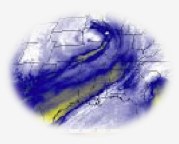 In this episode of NASA Now, you’ll visit NASA’s Spacecraft Propulsion Research Facility, called B-2, at NASA Plum Brook Station. You’ll meet Dr. Louis Povinelli and Brian Jones who explain why rockets are built in stages and the importance of testing a rocket before it is sent into space. B-2 is the world’s only facility capable of testing full-scale upper-stage launch vehicles and rocket engines under simulated high-altitude conditions. The engine or vehicle can be exposed for indefinite periods to low pressure, low temperatures, and dynamic solar heating. This simulates the harsh environment of space the hardware will encounter during orbital or interplanetary travel.
In this episode of NASA Now, you’ll visit NASA’s Spacecraft Propulsion Research Facility, called B-2, at NASA Plum Brook Station. You’ll meet Dr. Louis Povinelli and Brian Jones who explain why rockets are built in stages and the importance of testing a rocket before it is sent into space. B-2 is the world’s only facility capable of testing full-scale upper-stage launch vehicles and rocket engines under simulated high-altitude conditions. The engine or vehicle can be exposed for indefinite periods to low pressure, low temperatures, and dynamic solar heating. This simulates the harsh environment of space the hardware will encounter during orbital or interplanetary travel.
Link to the NES Virtual Campus home page.
NASA Now Preview Video



 Next month, MESSENGER will execute a 15-minute maneuver. placing the spacecraft into orbit around Mercury. It will be the first spacecraft ever to orbit the solar system’s innermost planet. Check out the MESSENGER module
Next month, MESSENGER will execute a 15-minute maneuver. placing the spacecraft into orbit around Mercury. It will be the first spacecraft ever to orbit the solar system’s innermost planet. Check out the MESSENGER module